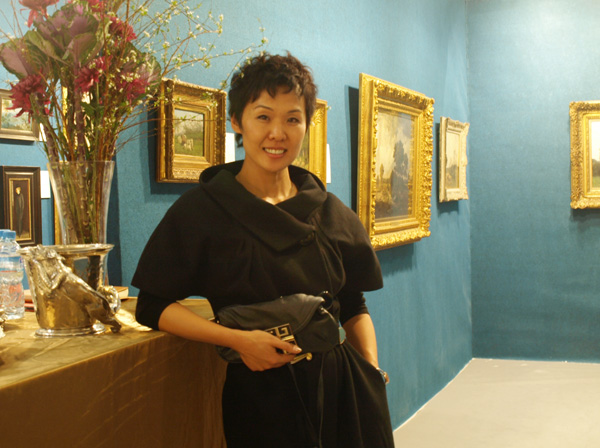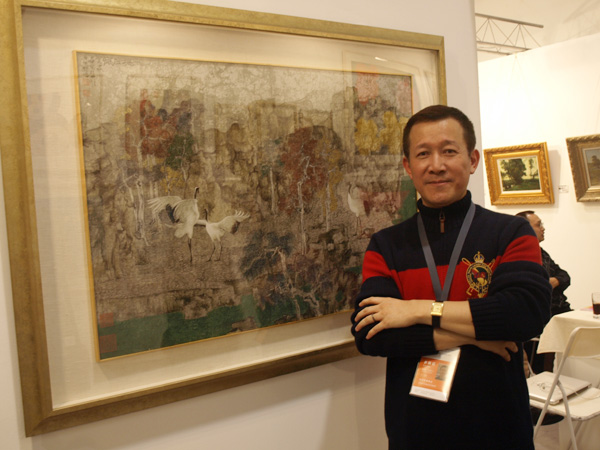Classic is the new contemporary
"After the volatility of contemporary art, people are now seeking more low-key, tasteful and valuable pieces. They are learning to appreciate art. I think this is the sign of a maturing market, and is likely to lead to a rise in value of both western and Chinese fine art. This is one of the reasons for the Show."
 |
|
Jennifer Zhou in the booth of Classic Jen Gallery on the show. [CRI] |
According to a report cited in an "art Beijing" guidebook specially published to coincide with the Fine Art Fair event, the Chinese art market has witnessed a dramatic transformation since 2008 largely due to the shifting landscape on the international scene. According to the report, the most significant change was seeing years of steady growth come to an end resulting in a stunning 50 percent decline in transactions compared with previous years.
The stable and reliable fine art market overtook that of contemporary art, which now seems to be in economic meltdown. Brisk sales in major auction houses such as Sotheby's and Christie's have given Chinese fine art dealers a boost of confidence. This phenomenon of the classic art market surpassing the contemporary has also been evident in China this year with the value of antique Chinese paintings and calligraphy reaching new heights in the spring auctions.
This seems to be the start of a new trend. As can be seen in the Art Beijing 2009-Fine Art Fair, many previously unheard of galleries are making an appearance, some displaying fantastic collections. Yingu Art Mansion is one example. This collection includes selected paintings of renowned Chinese artists Wu Zuoren (1908-1997), his wife and painter Xiao Shufang (1911-2005), and Deng Lin, the eldest daughter of Deng Xiaoping.
One representative from Yingu said they had brought the special oil painting "military harbor" (1956) by the late painter Wu Zuoren to signify their support of the show. Their display also includes much calligraphy and paintings from other masters.
 |
|
Director Chang Yih-chyun of Taiwan's Chuan Cheng Art Center and "the White Cranes in Red Maples" by artist Zheng Li. [CRI] |
Taiwan's Chuan Cheng Art Centre was formed in 1990. Director Chang Yih-chyun brought many fine pieces with him to the show, including work by renowned artists Li Tiefu, Hu Shanyu and the up-and-coming Deng Xianxian and Zhengli. Chang retains strong interest in Chinese ink-wash paintings, and his art centre has helped to promote this style.
As a sophisticated art collector, Mr Chang is noted for his eye for detail and impeccable taste. Unlike many other short-term investors who always jump on the bandwagon, Mr Zhang purchases the work of obscure painters, which usually become highly sought after within four to eight years.
Mr Chang believes it is not necessary to distinguish between classic and contemporary art. He says art is simply good or bad, true or false. The only important question is whether the artist paints with a true heart.
Note: In the West, "Classical Art" typically refers to artworks prior to or concurrent with Impressionism, while in China it primarily refers to traditional paintings and antiques.
 0
0 







Comments